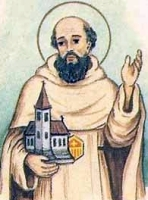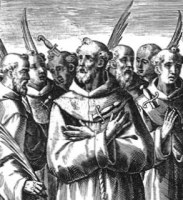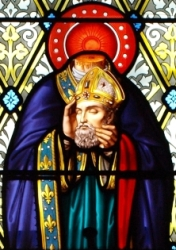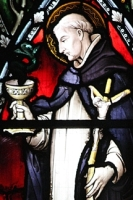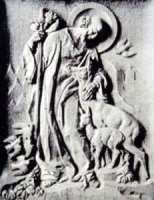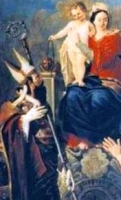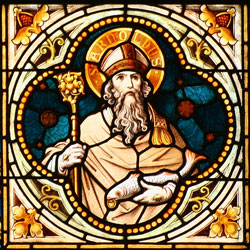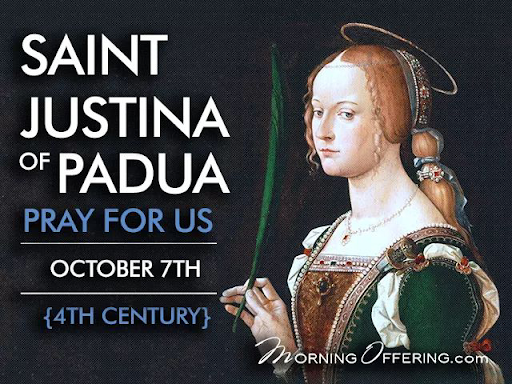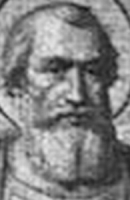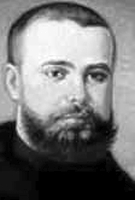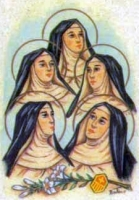Saint Daniel Comboni
புனிதர் டேனியல் கம்போனி
ஆயர்/ மத்திய ஆபிரிக்காவின் தலைமை குரு:
Bishop and Vicar Apostolic of Central Africa:
பிறப்பு: மார்ச் 15, 1831
லிமோன் சுல் கார்டா, ப்ரேசியா, லொம்பார்டி-வேநீஷியா அரசு
(Limone sul Garda, Brescia, Kingdom of Lombardy-Venetia)
இறப்பு: அக்டோபர் 10, 1881 (வயது 50)
கார்ட்டூம், சூடான்
(Khartoum, Sudan)
ஏற்கும் சமயம்:
ரோமன் கத்தோலிக்க திருச்சபை
(Roman Catholic Church)
முக்திபேறு பட்டம்: மார்ச் 17, 1996
திருத்தந்தை இரண்டாம் ஜான் பவுல்
(Pope John Paul II)
புனிதர் பட்டம்: அக்டோபர் 5, 2003
திருத்தந்தை இரண்டாம் ஜான் பவுல்
(Pope John Paul II)
நினைவுத் திருவிழா: அக்டோபர் 10
பாதுகாவல்:
மறைப்பணியாளர்கள் (Missionaries)
உதவித் தொழிலாளர்கள் (Aid workers)
கம்போனி மிஷனரி சகோதரிகள் (Comboni Missionary Sisters)
இயேசுவின் திருஇருதய கம்போனி மிஷனரிகள் (Comboni Missionaries of the Heart of Jesus)
புனிதர் டேனியல் கம்போனி, ஆபிரிக்காவில் மறைப்பணியாற்றிய ஒரு இத்தாலி நாட்டு ரோமன் கத்தோலிக்க ஆயரும் (Italian Roman Catholic Bishop), “இயேசுவின் திருஇருதய கம்போனி மிஷனரிகள்” (Comboni Missionaries of the Heart of Jesus) மற்றும் “கம்போனி மிஷனரி சகோதரிகள்” (Comboni Missionary Sisters) ஆகிய இரண்டு மறைப்பணி சமூகங்களை நிருவியவருமாவார். வெரோனா (Verona) நகரிலுள்ள வணக்கத்துக்குரிய நிக்கோலா மஸ்ஸாவின் (Venerable Nicola Mazza) கீழ் கல்வி பயின்ற இவர், அங்கே பன்மொழியியலாளரானார். 1849ம் ஆண்டு, ஆபிரிக்க கண்டத்தில் மறைப்பணியில் சேருவதாக உறுதியேற்ற இவர், 1857ம் ஆண்டு சூடானுக்கு (Sudan) பயணித்தார்.
ஆபிரிக்காவின் பல்வேறு பகுதிகளில் வாழும் பாதிக்கப்பட்ட ஏழை மக்களின்பால் ஐரோப்பிய கண்ட மக்களின் கவனத்தை ஈர்ப்பதற்காக கம்போனி கடும் பிரயத்தன முயற்சிகளில் ஈடுபட்டார். ஏழை மக்கள் மற்றும் நோயுற்ற மக்களுக்கு உதவும் தமது திட்டங்களுக்கு நிதி திரட்டுவதற்காக, 1865ம் ஆண்டு ஆரம்பம் முதல், மத்திய 1865ம் ஆண்டு வரை, லண்டன் மற்றும் பாரிஸ் போன்ற அநேக இடங்களுக்கு ஐரோப்பா முழுவதிலும் பயணம் மேற்கொண்டார். 1877ம் ஆண்டில் ஒரு ஆயராக நியமிக்கப்பட்ட காரணத்தால், ஆபிரிக்காவில் அவரது மறைப்பணியில் இவருக்கு பெரும் சுதந்திரம் கிட்டியது. கார்டூம் (Khartoum), கெய்ரோ (Cairo) மற்றும் பிற நகரங்களில் தமது சபையின் கிளைகளை நிறுவ இவரால் இயன்றது.
பிறப்பும் குருத்துவமும்:
கி.பி. 1831ம ஆண்டு, மார்ச் மாதம், 15ம் தேதியன்று, “லொம்பார்டி-வேநீஷியா” அரசின் “ப்ரேசியா” (Brescia) பிரதேசத்தின் “லிமோன் சுல் கார்டா” (Limone sul Garda) நகரில் பிறந்த இவரது பெற்றோர், தோட்ட வேலை செய்து பிழைத்துவந்த ஏழைகளாவர். “லுய்கி கம்போனி” மற்றும் “டோமென்சியா பேஸ்” (Luigi Comboni and Domenica Pace) ஆகியோர் இவரது பெற்றோர் ஆவர். அக்காலத்தில், “லிமோன்” (Limone) நகரமானது, ஆஸ்திரிய-ஹங்கேரிய பேரரசின் (Austrian-Hungarian Empire) அதிகார எல்லைக்குள் இருந்தது.
தமது பன்னிரெண்டு வயதில், வெரோனா (Verona) நகரிலுள்ள “வணக்கத்துக்குரிய நிக்கோலா மஸ்ஸா” (Venerable Nicola Mazza) நிறுவிய ஆன்மீக கல்வி நிறுவனத்தில் கல்வி கற்க சென்றார். அங்கே, மருந்தியல் கல்வியையும் (Medicine), அத்துடன் ஃபிரெஞ்ச் (French), ஆங்கிலம் (English) மற்றும் அரபிக் (Arabic) ஆகிய மொழிகளையும் கற்று தேறினார். பின்னர், குருத்துவம் பெறுவதற்கான கல்வியையும் கற்க தொடங்கினார். ஜப்பான் மறைசாட்சிகளைப் (Japanese martyrs) பற்றி கற்றறிந்திருந்த அவர், 1846ம் ஆண்டு முதலே தாமும் ஒரு மிஷனரி மறைப்பணியாளராக வேண்டுமென்ற விருப்பம் கொண்டிருந்தார். 1849ம் ஆண்டு, ஜனவரி மாதம், 6ம் நாளன்று, தாமும் ஆபிரிக்க மிஷனரியாக உறுதிபூண்டார். 1854ம் ஆண்டு, டிசம்பர் மாதம், 31ம் தேதியன்று, அப்போதைய “ட்ரென்ட் ஆயர்” (Bishop of Trent), (தற்போது அருளாளர்) “ஜோஹன் நெபோமுக்” (Johann Nepomuk von Tschiderer zu Gleifheim) என்பவரால் குருத்துவ அருட்பொழிவு பெற்றார். கம்போனி, 1855ம் ஆண்டு, செப்டம்பர் மாதம், 29ம் தேதி முதல், அக்டோபர் மாதம், 14ம் தேதி வரை, புனித பூமிக்கு திரு யாத்திரை சென்றார். மஸ்ஸாவின் முன்னாள் மாணவர்களான ஐந்து மிஷனரிகளுடன் இணைந்து, தமது தாயாரின் ஆசீர்வாதங்களுடன் ஆபிரிக்கா பயணம் புறப்பட்டார். அவர்களனைவரையும் ஆசீர்வதித்த அவரது தாயார், டேனியல், உங்களனைவரையும் இறைவன் ஆசீர்வதிப்பாராக என்றார். 1857ம் ஆண்டு, செப்டம்பர் மாதம், 8ம் தேதியன்று, தமது ஐந்து நண்பர்களான “ஜியோவனி பெல்ட்ரேம்” (Giovanni Beltrame), “அலெஸ்ஸாண்ட்ரோ டல் போஸ்கோ” (Alessandro dal Bosco), “ஃபிரான்செஸ்கோ ஒலிபொனி” (Francesco Oliboni), “ஏஞ்சலோ மெலோட்டோ” (Angelo Melotto) மற்றும் “இசிடோரோ ஸில்லி” (Isidoro Zilli) ஆகியோருடன் வடகிழக்கு இத்தாலியிலுள்ள (Northeastern Italy) “உடின்” (Udine) எனும் நகரிலிருந்து தமது ஆபிரிக்க பயணத்தை தொடங்கினார்.
நான்கு மாதங்களின் பின்னர், 1858ம் ஆண்டு, ஜனவரி மாதம், 8ம் தேதி, வடகிழக்கு ஆப்பிரிக்காவிலுள்ள (Northeastern Africa) சூடான் (Sudan) நாட்டின் தலைநகரான “கார்ட்டூம்” (Khartoum) சென்றடைந்தார். அடிமைப்படுத்தப்பட்ட சிறுவர்கள் மற்றும் சிறுமிகளின் விடுதலையே அவருக்குத் தரப்பட்ட வேலையாக இருந்தது. தாங்க முடியாத காலநிலை, பஞ்சம், மற்றும் நோய்கள் போன்ற எண்ணற்ற சிரமங்களும் அங்கே இருந்தன. அவற்றின் காரணமாக, அவரது சக மிஷனரிகள் பலரும் மரணமும் அடைந்திருந்தனர்.
அவரது தோழர்களில் ஒருவரது மரணத்தை நேரில் கண்ட இவர், அவரைத் தடுப்பதற்குப் பதிலாக அவரே தொடரத் தீர்மானித்திருந்தார். 1859ம் ஆண்டின் இறுதிக்குள், இவரது ஐந்து சகாக்களுள் மூவர் மரித்துப் போக, மீதமுள்ள இருவரும் கெய்ரோ நகரில் இருந்தனர். கம்போனி, இவர்கூட நோயுற்றிருந்தார். மலேரியா எதிர்ப்பு காரணமாக வெரோனாவுக்குத் திரும்ப வேண்டிய கட்டாயம் இவருக்கு ஏற்பட்டது. 1861ம் ஆண்டு முதல், 1864ம் ஆண்டுவரை, மஸ்ஸாவின் கல்வி நிலையத்தில் கற்பிக்கும் பணியாற்றிய கம்போனி, 1864ம் ஆண்டில் தனது சொந்த நிலத்தில் பணியாற்றும் பணிக்காக புதிய திட்டங்களை அவர் விரைவில் அறிமுகப்படுத்தினார். 1864ம் ஆண்டு, செப்டம்பர் மாதம், 15ம் தேதி, ரோம் நகரில் புனிதர் பேதுருவின் கல்லறைக்கு விஜயம் செய்தார். "ஆபிரிக்கா வழியாக ஆபிரிக்கா காப்போம்" எனும் கோசங்களுடன், "ஆப்பிரிக்காவின் மறுபிறப்புக்கான திட்டம்" என்ற கருத்தின் அடிப்படையில் திட்டங்களை தயாரித்தார். நான்கு நாட்கள் கழித்து, செப்டம்பர் 19ம் தேதி, அவர் தனது திட்டத்தை விவாதிக்க திருத்தந்தை ஒன்பதாம் பயஸ் (Pope Pius IX) அவர்களை சந்தித்தார்.
ஐரோப்பிய கண்டம் மற்றும் அகில உலக கிறிஸ்தவ திருச்சபை ஆகியவை ஆபிரிக்க கண்டத்தில் அதிக அக்கறை காட்ட வேண்டும் என்று கம்போனி விரும்பினார். 1864ம் ஆண்டு, டிசம்பர் மாதம் முதல், 1865ம் ஆண்டு, ஜூன் மாதம் வரையிலான காலத்தில், ஆபிரிக்க நாடுகளின் மிஷனரிகளின் ஆன்மீக மற்றும் பொருளாதார உதவிக்காக அவர், முடியாட்சி குடும்பங்கள், ஆயர்கள் மற்றும் பிரபுக்கள் உள்ளிட்ட ஐரோப்பா முழுவதும் பயணித்து விண்ணப்ப்பித்தார். ஒரு ஆஸ்திரிய தூதரக விசாவில் (Austrian consular visa) பயணித்த இவர், பிரான்ஸ் (France), ஸ்பெயின் (Spain), இங்கிலாந்து (England), ஜெர்மனி (Germany), ஆஸ்திரியா (Austria) ஆகிய நாடுகளுக்கும் பயணித்தார். மனிதாபிமான "கொலோன் சங்கம்" (The humanitarian "Society of Cologne") அவருடைய பணிகளுக்கு முக்கிய ஆதரவாளராக ஆனது.
1867ம் ஆண்டு, ஜூன் மாதம், முதலாம் தேதி, கம்போனி ஆண்களுக்கான ஒரு சேவை நிறுவனத்தை நிறுவினார். 1872ம் ஆண்டு, பெண்களுக்கான ஒரு நிறுவனத்தை நிறுவினார். இரண்டுமே வெரோனா நகரில் நிறுவப்பட்டது. ஆண்களுக்கான சபையானது, “இயேசுவின் திருஇருதய கம்போனி மிஷனரிகள்” (Comboni Missionaries of the Heart of Jesus) என்றும், பெண்களுக்கான சபையானது, “கம்போனி மிஷனரி சகோதரிகள்” (Comboni Missionary Sisters) என்றும் பெயரிடப்பட்டது. 1867ம் ஆண்டு, மே மாதம், 7ம் தேதி, திருத்தந்தை ஒன்பதாம் பயஸ் (Pope Pius IX) அவர்களை சந்தித்த கம்போனி, தம்முடன் பன்னிரெண்டு ஆபிரிக்க சிறுமிகளையும் அழைத்து வந்திருந்தார். பின்னர், 1867ம் ஆண்டு இறுதியில் கெய்ரோ நகரில் தமது சபையின் இரண்டு கிளைகளை திறந்து வைத்தார். ஆபிரிக்காவில் இதுபோன்ற பணிகளில் பெண்களை முதன்முதலில் அழைத்து வந்தது கம்போனியே ஆவார். அவர், “எல் ஒபெய்ட்” (El Obeid) மற்றும் “டெலென்” (Delen) போன்ற பிற சூடான் நகரங்களில் புதிய மிஷனரி பணிகளைத் தொடங்கினார். கம்போனி அரபி மொழியை நன்கு அறிந்திருந்தார். பல ஆபிரிக்க மொழிகளில் (டின்கா, பாரி மற்றும் நுபியா) பேசும் திறன் பெற்றிருந்தார். அதேபோல் ஆறு ஐரோப்பிய மொழிகளிலும் பேசினார்.
1870ம் ஆண்டு, மார்ச் மாதம், கெய்ரோவிலிருந்து ரோம் நகர் சென்ற கம்போனி, அங்கே “முதலாம் வத்திக்கான் கவுன்சிலில்” (First Vatican Council) “வெரோனா பிஷப் இறையியலாளராக” (Theologian of the Bishop of Verona) பங்கேற்றார். ஆபிரிக்க மிஷனரி பணிகளுக்காய் அவருடைய விண்ணப்பம் எழுபது ஆயர்களின் ஒப்புதல்களை கையெழுத்துக்களை பெற்றுத் தந்தது. “ஃபிரான்கோ-ப்ரூசியன்” (Franco-Prussian War) போர் வெடித்த காரணத்தாலும், திருத்தந்தையர் மாநிலங்கள் (Papal States) கலைக்கப்பட்ட காரணத்தாலும் “முதலாம் வத்திக்கான் கவுன்சில்” (First Vatican Council) இடைநிறுத்தப்பட்டது.
1877ம் ஆண்டு, “மத்திய ஆபிரிக்காவின் விகார் அப்போஸ்தலிக்” (Vicar Apostolic of Central Africa) எனும் பட்டம் பெற்ற கம்போனியா, 1877ம் ஆண்டு, ஆகஸ்ட் மாதம், 12ம் நாளன்று, ஆயராக நியமனம் பெற்றார். 1877ம் ஆண்டிலும், மீண்டும் 1878ம் ஆண்டிலும் அவர்களுடைய மிஷனரி பிரதேசங்களில் பஞ்சம், பட்டினி உள்ளிட்ட வறட்சி ஏற்பட்டது. உள்ளூர் மக்கள் மிக மோசமாக பாதிப்படைந்தனர். மத ஊழியர்கள், மிஷனரிகள் மற்றும் அவர்களின் நடவடிக்கைகள் கிட்டத்தட்ட ஏறக்குறைய குறைந்து, இல்லாது போயின.
1880ம் ஆண்டு, நவம்பர் மாதம், 27ம் தேதி, நேபிள்ஸ் (Naples) நகரிலிருந்து சூடான் நாட்டின் தமது மிஷனரி நோக்கி எட்டாவது, மற்றும் கடைசி தடவையாக, அடிமை வியாபாரத்தை எதிர்க்க பயணித்த கம்போனி, இறுதியில் நோயுற்றார். 1881ம் ஆண்டு, ஆகஸ்ட் மாதம், ஒன்பதாம் தேதி, கார்ட்டும் (Khartoum) நகர் சென்றடைந்தார். அக்டோபர் மாதம் 5ம் தேதி முதல் அதிக காய்ச்சலால் பாதிக்கப்பட்டிருந்த கம்போனி, காலரா நோயால் பாதிக்கப்பட்டு, அக்டோபர் மாதம் பத்தாம் தேதி மரணமடைந்தார்.
Profile
Educated at Father Mazza's Institute in Verona, Italy, studying theology, medicine, and several languages. Ordained on 31 December 1854 in the diocese of Verona, Italy by Blessed John Nepomuk von Tschiderer. Missionary to modern Sudan in 1857, but returned home in 1859 due to ill health. Taught at Mazza's Institute 1861 to 1864. Wrote on the need for aid in Africa, that the aid should be used to "Save Africa Through Africa", treating Africans as adults in need of a hand, not children in need of guidance as was common in European thought of the day. Travelled to France, Spain, England, Germany, and Austria to on fund-raising missions.
In 1867 at Verona, he founded the Istituto delle Missioni per la Nigrizia for priests and brothers, and the Istituto delle Pie Madri for women who were called to work in Africa; they became known as the Comboni Missionaries, and in 1894 became the Congregation of the Sons of the Sacred Heart. He opened similar institutions in Cairo, Egypt, to acclimatize missionaries to Central Africa. Wrote to the 1st Vatican Council in 1870 on the need for Church's involvement in African conversion. Pro-vicar Apostolic of Central Africa in 1872 covering Nubia, Egyptian Sudan, and the territory south to the Lakes (nearly 100,000,000 people). He founded missions in El-Obeid (Kordofan), Khartoum, Berber, Delen, and Malbes. Vicar Apostolic of Central Africa, titular bishop of Claudiopolis, and Bishop of Khartoum in 1877.
He helped suppress the slave trade in the region. Contributed material for scientific works about the region, and of its geography; works on several dialects were based in large part on Daniel's notes about the languages. He spoke six European languages, Arabic, and several central African dialects. The Comboni Family continue their work today with priests, brothers and sisters ministering in hospitals, schools, and orphanages in 41 countries.
Born
15 March 1831 at Limone sul Garda, Italy
Died
10 October 1881 of natural causes at Khartoum, Sudan of natural causes
Canonized
5 October 2003 by Pope John Paul II
Blessed Angela Truszkowska
Also known as
• Maria Angela
• Mother Mary Angela
• Sophia Truszkowska
• Zofia Kamila Truszkowska
Profile
Eldest daughter of Joseph and Josephine Truszkowski, Polish nobles. Well educated, Sophia was a pious, and lively youth with a frail constitution. She relocated to Warsaw, Poland in 1837, and attended the Academy of Madame Guerin. Due to respiratory illness, she and her tutor Anastasia moved to Switzerland in 1841 at age 16. On 26 June 1848, at age 23, she had a moment of extraordinary grace that she considered a conversion experience, and which led her to the religious life. Spiritual student of Capuchin Father Honorat Kozminski in 1854. Joined the Society of Saint Vincent de Paul in 1855 to help the poor, aged and homeless of Warsaw. Housed homeless children into her own home. In November 1854, she and her cousin Clothilde rented a two-room apartment at 10 Church Street, Nowe Miasto, in Warsaw. There homeless children spent their days in class and Mass, and then stayed the night; it was known as the Institute of Miss Truszkowska. Sophia prayed with the children at the Shrine of Saint Felix of Cantalice in a nearby Capuchin church. People call the kids the "children of Saint Felix" and the women the Sisters of Saint Felix, the Felicians. Thus was founded the Felician Sisters who are devoted to service to the poor, orphaned, sick and elderly. In 1855 Sophia and Clothilde become Franciscan tertiaries, Sophia taking the name Angela. She was forced to withdraw as its leader due to increasing deafness.
Born
16 May 1825 at Kalisz, Poland as Sophia Camille Truszkowska
Died
12.45am 10 October 1899 of natural causes
Beatified
18 April 1993 by Pope John Paul II
Patronage
• against sickness
• exiles
• sick people
Saint Cerbonius of Populonia
Also known as
• Cerbonius of Piombino
• Cerbonius of Massa Marittima
• Cerbo, Cerbone, Cerbonio
Profile
Raised in a Christian family in North Africa. Priest, ordained by Saint Regulus. He and most other Christians in his area fled ahead of the Vandal persecutions; he and many other moved to the Tuscany region of Italy and lived as hermits.
His reputation for holiness spread, and Cerbonius was chosen bishop of Populonia, Italy c.544; he soon became unpopular as he conducted Sunday Mass at dawn, forcing his flock to get up in the middle of the night. Pope Vigilius summoned him to Rome to answer the complaints. When he arrived, Cerbonius woke the pope at dawn for Mass; the two heard the singing of angels, Vigilius gave him permission to say Mass whenever he thought proper, and sent him home.
For hiding Roman soldiers who were fleeing invading Ostrogoths, Cerbonius was ordered to be executed by being thrown to a bear. The bear was terrified of Cerbonius, fell to the ground and began licking the bishop's feet. Cerbonius was exiled to the island of Elba, Italy instead, where he spent the rest of his life as a prayerful hermit.
Born
c.493 in North Africa
Died
• 575 in Elba, Italy
• buried at his request in Populonia, Italy
• at Populonia there is a fountain and chapel dedicated to Saint Cerbonius; local lore says that "Whoever does not drink from the fountain of Saint Cerbonius is a thief or a rascal."
• relics re-located to the Saint Cerbonius cathedral in Massa Marittima, Italy
• with Pope Vigilius
Patronage
Massa Marittima, Italy
Representation
• bishop with a bear licking his feet
• bishop healing three men dying of fever
• geese (on the trip to Rome to answer the summons of Pope Vigilius, he turned a flock of geese into pets by making the Sign of the Cross over them; when they reached Saint Peter's Basilica, he made the Sign again and freed the birds)
• priest or bishop celebrating Mass at dawn
• pastoral staff
Saint Paulinus of York
Profile
The Venerable Bede describes him as a "tall man with a slight stoop, who had black hair, a thin face and a narrow, aquiline nose, his presence being venerable and awe-inspiring". Monk at the monastery of Saint Andrew, Rome, Italy. Missionary to the Anglo-Saxons in 601, sent by Pope Saint Gregory the Great. Worked with Saint Augustine of Canterbury, Saint Justus of Canterbury, and Saint Mellitus of Canterbury. Evangelized in Kent for 24 years. Bishop of York in 625. First missionary to Northumbria, converting thousands including King Saint Edwin in 627. When the pagan Mercians defeated Edwin's forces in 633, Paulinus retreated to Kent with the remaining royal family. Friend of Saint Ethelburgh of Kent. Bishop of Rochester.
Born
584 in Rome, Italy
Died
• 10 October 644 at Rochester, Kent, England of natural causes
• interred in Rochester cathedral
Patronage
Rochester, England
Saint John of Bridlington
#ப்ரைட்லிங்டன்_நகர்ப்_புனித_ஜான் (1319-1379)
இவர் (#St_John_of_Bridlington) இங்கிலாந்து நாட்டைச் சார்ந்தவர்.
தன்னுடைய உயர்கல்வியை ஆக்ஸ்போர்டு பல்கலைக்கழகத்தில் படித்து முடித்த இவர்,
புனித அகுஸ்தின் துறவற சபையில் சேர்ந்து துறவியானார்.
துறவு மடத்தில் பல்வேறு பொறுப்புகளை வகிக்க இவர், இறுதியில் பலருடைய வற்புறுத்தலின் பேரில் துறவு மடத்தின் தலைவரானார்.
புனிதத்திற்கும் தாழ்ச்சிக்கும் தாராள உள்ளத்திற்கும் எடுத்துக்காட்டாய் விளங்கிய இவர், மண்ணுலகில் வாழ்ந்த காலத்திலேயே பல்வேறு வல்ல செயல்களைச் செய்தார்.
ஹாட்டில்பூல் (Hartlepool) என்ற கடற்பகுதியில் ஜந்து பேர் பயணம் செய்து கொண்டிருக்கும்போது, கடலில் பெரும் கொந்தளிப்பு ஏற்பட்ட அவர்கள் இவரிடம் மன்றாட, எந்தவொரு ஆபத்தும் இன்றி அவர்கள் காப்பாற்றப்பட்டனர்.
இன்னொரு முறை இங்கிலாந்தை ஆண்டு வந்த ஐந்தாம் ஹென்றி என்ற மன்னர், அகின்கோர்ட் (Agincourt) என்ற இடத்திற்கு எதிராகப் போர்த்தொடுக்கச் செல்லும்போது இவருடைய உதவியை நாடியதால் போரில் அவருக்கு வெற்றி கிடைத்தது.
இப்படித் தாழ்ச்சிக்கும் புனிதத்திற்கும் எடுத்துக்காட்டாக விளங்கிய இவர், 1379 ஆம் ஆண்டு இறையடி சேர்ந்தார்.
கர்ப்பிணிப் பெண்கள் இவரிடம் வேண்டிக் கொண்டால் சுகப் பிரசவம் கிடைக்கும் என்றொரு நம்பிக்கை இருக்கிறது.
Also known as
• John Thwing
• John of Thwing
• John Twenge
• John Thwing of Bridlington
Additional Memorials
• 9 October among the Augustinian Canons Regular
• 1 December as one of the Martyrs of Oxford University
Profile
Studied at Oxford, England from age 17. Augustinian Canon Regular at age 19. Held several posts in Saint Mary's abbey in Bridlington, England. Reluctant prior of Saint Mary's for 17 years beginning in 1362. Highly recommended the study of the Gospel of Saint John as a source for information and inspiration on the Gospel life.
King Henry V's victory at Agincourt was attributed to the aid of Saint John of Bridlington and Saint John of Beverly. Five sailors from Hartlepool were in danger of drowning, and called for the help of Saint John; the holy prior appeared to them at sea, wearing his habit. He led the men safely to shore.
Born
1319 at Thwing (near Bridlington), Yorkshire, England
Died
• 10 October 1379 of natural causes
• relics translated 11 March 1404
Canonized
• 1401 by Pope Boniface IX
• the Bull of Canonization has been lost
Patronage
women in difficult labour
Representation
• with a book, crosier, and fur almice
• with these items and with a muzzled animal at his feet
Blessed Daniele di Calabria
Also known as
• Daniele Fasanella
• Deniele of Ceuta
Profile
Priest who joined the Franciscans in 1219. In 1224 he helped found the convent of Santa Maria del Soccorso near Rogliano, Italy. He helped found the convent of Gerace Superiore. Provincial superior of Calabria, Italy.
Called to missionary work, he was one of a group of seven Friars Minor who tried to bring the faith to Muslims in the area of Ceuta, Spain, which borders on modern Morocco. Initially treated as madmen, especially since they were street-preaching in Latin and Italian, within three weeks they were ordered to convert to Islam, and when they would not, they were first abused in the streets, then arrested, tortured and executed. Martyr.
Born
latter 12th century Belvedere Marittimo, Kingdom of Sicily (modern Italy)
Died
• beheaded in October 1227 in Mauritania Tingitana, Almohad Empire (modern Ceuta, Spain)
• local Christians secreted the bodies away and gave them proper burial in Ceuta
Beatified
22 January 1516 by Pope Leo X
Patronage
• Belvedere Marittimo, Italy
• Orani, Italy
• Ceuta, Spain
Blessed Leon Wetmanski
Additional Memorial
12 June as one of the 108 Martyrs of World War II
Profile
Priest. Auxiliary bishop of Plock, Poland, serving with Blessed Antoni Julian Nowowiejski. Father Leon was known for his personal piety, as an enthusiastic pastor, and for a ministry to the poor. He was arrested> with Blessed Antoni in the persecutions of the Gestapo during the Nazi occupation of Poland in World War II, and imprisoned in the Dzialdowo concentration camp. Martyr.
Born
10 April 1886 in Zuromin, Mazowieckie, Poland
Died
10 October 1941 in the prison camp at Dzialdowo, Warminsko-Mazurskie, in Nazi-occupied Poland
Beatified
13 June 1999 by Pope John Paul II in Warsaw, Poland
Blessed Edward Detkens
Additional Memorial
12 June as one of the 108 Martyrs of World War II
Profile
Priest in the archdiocese of Warsaw, Poland where he served as chaplain to university students and personnel, and rector of the church of Saint Anne. Imprisoned by the Gestapo in the Dachau concentration camp during the Nazi occupation of Poland in World War II. Martyr.
Born
14 October 1885 in Mokotów, Mazowieckie, Poland
Died
gassed on 10 October 1942 in the chambers of Dachau, Oberbayern, Germany
Beatified
13 June 1999 by Pope John Paul II in Warsaw, Poland
Saint Maharsapor the Persian
Also known as
Sapor
Profile
Persian noble raised as a Christian. When a Mazdean temple was destroyed, King Yezdigerd used it as an excuse to unleash a persecution of Christians. Arrested and tortured with Narses (sometimes Parses) and Sabutaka. The other two were then immediately executed, but Maharsapor was imprisoned for three years, regularly tortured. Repeatedly dragged before judge Hormisdavrus for interrogation, he was given chances to win his freedom by denouncing his faith; he always declined. The persecutions were continued in the reign of Varanes V, and Maharsapor was eventually thrown into a pit to starve. He was found dead three days later, kneeling, surrounded by light, apparently having died in prayer.
Born
4th century Persia
Died
starved to death in 421 in Persia
Saint Eulampia and Saint Eulampius
Profile
Brother and sister, as children they were arrested for being Christians during the persecutions of Maximinian Herculeus. In court they admitted it and refused to renouce the faith. Martyr.
Died
• thrown into a cauldron of boiling oil, they stepped out unhurt
• beheaded in 302 at Nicomedia, Asia Minor (in modern Turkey)
Saint Florentius the Martyr
Profile
One of a group of nine martyrs who were murdered at the command of Emperor Maximian Herculeus. May have been part of the Theban Legion.
Died
• beheaded c.303 at Bonn, Germany
• a church was built over their tombs in the 4th century
• relics translated to the present church in 1166
• re-discovered there in 1929
Patronage
Bonn, Germany
Saint Cassius
Profile
One of a group of nine martyrs who were murdered at the command of Emperor Maximian Herculeus. May have been part of the Theban Legion.
Died
• beheaded c.303 at Bonn, Germany
• a church was built over their tombs in the 4th century
• relics translated to the present church in 1166
• relics re-discovered there in 1929
Patronage
Bonn, Germany
Representation
member of the Theban Legion
Saint Victor of Xanten
Also known as
Viktor
Additional Memorial
22 September as one of the Martyrs of the Theban Legion
Profile
Relative of Saint Verena. Soldier. Leader of a cohort of the Theban Legion. Martyr. One of the Theban Martyrs.
Died
• c.287 in Agaunum (modern St-Maurice-en-Valais, Switzerland
• relics translated to the cathedral in Xanten, Germany in the 12th century
Saint Gereon
Also known as
Gerone
Profile
Imperial Roman soldier. Martyred with 290 other Christians on order of emperor Maximian for refusing to sacrifice to pagan gods to obtain victory in battle.
Died
• beheaded c.304 in either Xanten or Bonn in Germany (records vary)
• relics translated to Cologne, Germany
Patronage
• against headaches
• against migraine
• Cologne, Germany
Blesssed Pedro de Alcantara de Forton de Cascajares
Also known as
Brother Pedro Tomás of the Virgin of the Pillar
Profile
Discalced Carmelite priest. Martyred in the Spanish Civil War.
Born
26 April 1888 in Zaragoza, Spain
Died
10 October 1936 in Garraf, Barcelona, Spain
Beatified
28 October 2007 by Pope Benedict XVI
Saint Malo the Martyr
Profile
Layman. Soldier in a legion of Christian soldiers from Upper Egypt during the reign of Emperor Maximian Herculeus. The legion, as many as 6600 men, was massacred en masse by their own side when they refused to participate in pagan sacrifices prior to battle.
Died
c.287 at Aaunum, an area of modern Switzerland
Saint Paulinus of Capua
Profile
Pilgrim from the British Isles who emigrated to Capua, Italy. He was such an obvious holy man and teacher that the locals demanded that he become their bishop. He served for eight years, fled the area during the Saracen invasion, served as best he could from Sicopli, Italy, and died in exile.
Died
843 in Sicopoli (modern Triflisco), Italy of natural causes
Blessed Demestrius of Albania
Profile
Migrated to Spoleto, Italy in 1441. Franciscan tertiary. Spiritual student of Blessed Gregory of Spoleto. Prayerful hermit on Monte Luco for 50 years.
Born
Albania
Died
• 10 October 1491 of natural causes
• buried at the church of the Franciscan monastery of Saint Paul outside Spoleto, Italy
Saint Aldericus of Sens
Also known as
Aldric, Audri
Profile
Benedictine monk at Ferrières, France. Priest. Archbishop of Sens, France in 828.
Born
790 in the Gatinais region of France
Died
• 841 of natural causes
• most relics destroyed by Huguenots in 1569
Patronage
Sens, France
Saint Pinytus of Crete
Also known as
• Pinytus of Cnossos
• Pinytus of Knossos
• Pinito...
Profile
Bishop of Crete. His contemporaries considered him one of the greatest ecclesiastical writers of his time.
Born
Greece
Died
180 of natural causes
Saint Clarus of Nantes
Also known as
Chiara
Profile
Third century missionary to Armorica (in modern Brittany, France). Bishop of Nantes, France.
Blessed Pontius de Barellis
Profile
Mercedarian friar. Theologian and teacher of theology.
Born
Lyon, France
Blessed Hugh of Macon
Profile
Cistercian Benedictine monk. Abbot at Pontigny in 1114. Bishop of Auxerre, France in 1137, the first Cistercian monk to become a bishop.
Died
1151
Saint Teodechilde
Also known as
Telchilde
Profile
Nun. Abbess of Jouarre Abbey, Meaux, France c.630 where she was a noted spiritual teacher of her sisters.
Saint Gundisalvus
Profile
Cistercian Benedictine monk. First prior of the Cistercian abbey at Las Junias, Portugal in 1135.
Died
c.1163
Saint Cerbonius of Verona
Also known as
Cerebonius
Profile
Bishop of Verona, Italy.
Died
c.400
Saint Fulk of Fontenelle
Profile
Benedictine monk. Abbot at Fontenelle in France.
Died
845 of natural causes
Saint Patrician
Profile
Fifth century bishop in Scotland. Driven into exile by pagan Scots, he spent his latter years as a hermit on the Isle of Man.
Saint Tanca
Profile
Young girl martyed defending her virginity.
Died
c.637 near Troyes, France
Martyrs of Ceuta
Profile
A group of seven Friars Minor who tried to bring the faith to Muslims in the area of Ceuta, Spain, which borders on modern Morocco. Initially treated as madmen, especially since they were street-preaching in Latin and Italian, within three weeks they were ordered to convert to Islam, and when they would not, they were first abused in the streets, then arrested, tortured and executed. Martyrs.
• Angelo
• Daniele di Calabria
• Donnolo
• Hugolinus
• Leone
• Nicola
• Samuele
Died
• beheaded in October 1227 in Mauritania Tingitana, Almohad Empire (modern Ceuta, Spain)
• local Christians secreted the bodies away and gave them proper burial in Ceuta
Beatified
22 January 1516 by Pope Leo X
St. Francis Borgia
புனிதர் ஃபிரான்சிஸ் போர்ஜியா
இயேசு சபை குரு/ ஒப்புரவாளர்:
(Jesuit/ Confessor)
பிறப்பு: அக்டோபர் 28, 1510
காண்டியா, வாலென்சியா அரசு, ஸ்பெயின்
(Duchy of Gandía, Kingdom of Valencia, Spain)
இறப்பு: செப்டம்பர் 30, 1572 (வயது 61)
ரோம், திருத்தந்தையர் மாநிலங்கள்
(Rome, Papal States)
ஏற்கும் சமயம்:
ரோமன் கத்தோலிக்க திருச்சபை
(Roman Catholic Church)
முக்திபேறு பட்டம்: நவம்பர் 23, 1624
திருத்தந்தை எட்டாம் அர்பன்
(Pope Urban VIII)
புனிதர்பட்டம்: ஜூன் 20, 1670
திருத்தந்தை பத்தாம் கிளமெண்ட்
(Pope Clement X)
பாதுகாவல்:
பூகம்பத்திலிருந்து, காண்டியா, ரோட்டா, மரியானா மற்றும் போர்ச்சுகல்
நினைவுத் திருநாள்:
30 September
10 October (1688–1969)
3 October (Jesuits)
புனிதர் ஃபிரான்சிஸ் போர்ஜியா, பதினாறாம் நூற்றாண்டில் வாழ்ந்திருந்த “ஸ்பெயின் நாட்டு கனவானும்” (Grandee of Spain), “ஸ்பேனிஷ் இயேசு சபை துறவியும்” (Spanish Jesuit), இயேசு சபைச் சமூகத்தின் மூன்றாவது பெரும்தலைவரும் (Superior General of the Society of Jesus) ஆவார்.
ஸ்பெயின் நாட்டின் கிழக்குப் பிராந்தியமான “வலென்சியாவின்” (Valencia) “காண்டியா” (Gandía) எனும் நகரில் பிறந்த இவரது தந்தை, காண்டியா நகரின் மூன்றாவது பிரபு ஆவார். அவரது பெயர், "ஜுவான் போர்ஜியா" (Juan Borgia) ஆகும். இவரது தாயார், "ஜுவானா" (Juana) ஆவார்.
சிறு வயதிலேயே பக்தி மார்க்கத்தில் நாட்டம் கொண்டிருந்த ஃபிரான்சிஸ், துறவு பெறுவதில் ஆவலாயிருந்தார். ஆனால், இவரது பெற்றோர் இவரை இவரது விருப்பத்திற்கு மாறாக தூய ரோமப் பேரரசர் “ஐந்தாம் சார்ளசின்” (Charles V, Holy Roman Emperor) அரண்மனைக்கு அனுப்பினார். அங்கே இவர் ஒரு உறவினராக வரவேற்கப்பட்டார்.
கி.பி. 1529ம் ஆண்டில் இவருக்கு “மேட்ரிட்” (Madrid) நகரில், "லியோனர்" (Leonor de Castro Mello y Meneses) என்னும் போர்ச்சுகீசிய உயர்குடியைச் சேர்ந்த பெண்ணுடன் திருமணம் நடந்தது. இவர்களுக்கு எட்டு குழந்தைகள் பிறந்தனர். பேரரசர் ஐந்தாம் சார்ளஸ் இவரை பல்வேறு உயர் பதவிகளில் அமர்த்தினார்.
கி.பி. 1539ம் ஆண்டு, இவர் ஸ்பெயின் நாட்டின் அரசன் “இரண்டாம் பிலிப்பின்” (Philip II of Spain) தாயாரான “இசபெல்லாவின்” (Isabella of Portugal) சவ ஊர்வலத்தில் கலந்துகொண்டார். அதே வருடம், "கடலோனியாவின் வைசராயாக (Viceroy of Catalonia) நியமிக்கப்பட்டார்.
கி.பி. 1543ம் ஆண்டில், "காண்டியா (Gandía) மாநிலத்தின் மூன்றாம் பிரபுவாக இருந்த இவரது தந்தையார் மரணமடையவே, ஃபிரான்சிஸ் "காண்டியா" மாநிலத்தின் நான்காம் பிரபுவாக பதவியேற்றார். இளவரசர் “பிலிப்புக்கும்” போர்ச்சுகல் நாட்டின் இளவரசிக்கும் (Prince Philip and the Princess of Portugal) திருமணம் செய்விக்க இவர் எடுத்துக்கொண்ட முயற்சிகள் தோல்வியடைந்த நிலையில், இவரது இராஜதந்திர திறன்கள் கேள்விக்குள்ளாக்கியது. அதே வேளை, இரு நாடுகளை இணைக்கும் முயற்சியும் தோல்வியடைந்ததால், 33 வயதான ஃபிரான்சிஸ் தமது பிரபு பதவியிலிருந்து ஓய்வு பெற்றார். பின்னர், அவர் ஆன்மீக நடவடிக்கைகளில் ஈடுபட தொடங்கினார்.
கி.பி. 1546ம் ஆண்டு, இவரது மனைவியான "லியோனர்" (Leonor) மரணமடையவே, இவர் புதிதாய் தொடங்கப்பட்டிருந்த இயேசு சபையில் இணைய முடிவெடுத்தார். 1551ம் ஆண்டில் இயேசு சபை குருவாக குருத்துவ அருட்பொழிவு பெற்றார்.
ஒருமுறை, ஃபிரான்சிஸ் “பெரு” (Peru) நாட்டிற்கு பயணித்துவிட்டு திரும்புகையில், அப்போதைய திருத்தந்தை மூன்றாம் ஜூலியஸ் (Pope Julius III) அவர்கள், போர்ஜியாவைப் பற்றி கேள்விப்பட்டு, அவரை கர்தினாலாக உயர்த்த முடிவு செய்தார். ஆனால், இதைக் கேள்வியுற்ற போர்ஜியா இதிலிருந்து மீளும் வகையில் புனித இக்னேஷியசுடன் (St. Ignatius) செய்துகொண்ட ஒப்பந்தத்தின்படி, இரகசியமாக நாட்டை விட்டு வெளியேறி "பாஸ்கு" (Basque) நாடு செல்ல முடிவெடுத்தார். தனிமையே ஜெபிக்க உதவும் என முடிவெடுத்தார்.
கி.பி. 1554ம் ஆண்டு, போர்ஜியா ஸ்பெயின் நாட்டின் இயேசு சபையின் தலைமைப் பொறுப்பேற்றார். அங்கே அவர் பத்துக்கும் மேற்பட்ட கல்லூரிகளை நிறுவினார். இரண்டே வருடங்களின் பின்னர், கிழக்கு மற்றும் மேற்கிந்திய நாடுகளிலும் கல்வி மற்றும் சமய பணிகளை மேற்கொள்ள பொறுப்புகள் கிடைக்கப்பெற்றார்.
கி.பி. 1565-1572 ஆகிய வருடங்களுக்கிடையே அவர் கண்ட வெற்றிகளால், புனித இக்னேஷியசின் மறைவிற்குப் பிறகு போர்ஜியாவை பெருந்தலைவராக்க சரித்திரவியலாளர்களை முடிவெடுக்க வைத்தன. பின்னாளில், "கிரகோரியன் பல்கலைக்கழகமாக" (Gregorian University) பல்கலையை நிறுவிய பெருமையும் ஃபிரான்சிஸ் போர்ஜியாவையே சேரும். இவர் அரசர்கள் மற்றும் திருத்தந்தையருடன் நெருக்கமாக காணப்பட்டார். அவர்களுக்கு ஆலோசகராகவும் செயல்பட்டார்.
அனைத்து அதிகாரங்களும் இருந்தும் ஃபிரான்சிஸ் போர்ஜியா தாழ்ச்சியான வாழ்வையே வாழ்ந்தார். உணவு பந்தியில் தாழ்ச்சியோடு தன் கையால் அனைவருக்கும் உணவு பரிமாறினார். அதன்பின்னர் மண்டியிட்டு மற்ற குருக்களிடம் உணவு தருமாறு கெஞ்சிகேட்டு வாங்கி உண்டார். இவருடன் இருந்த குருக்கள், பல வழிகளில் இவரை கோபமூட்டினர். ஆனால் ஃபிரான்சிஸ் கோபம் கொள்ளாமல், அனைவரிடத்திலும், எல்லாச் சூழ்நிலைகளிலும் அன்பாகவே நடந்துக்கொண்டார். அவர் தனது குருத்துவ வாழ்வில் ஒரு முறை மட்டும் பிறர் தனக்கு மரியாதை கொடுத்த காரணத்திற்காக கோபப்பட்டுள்ளார். இவரது தாழ்ச்சியின் வாழ்கை முறையால், இயேசு சபை ஸ்பெயின், மற்றும் போர்த்துக்கல் நாடு முழுவதிலும் பரப்பியது. இவரின் அற்புதமான, அழகான பணிகளைக் கண்டு, அந்நாட்டு இளைஞர்கள் பலர் அச்சபையில் இணைந்து குருவாகி ஃபிரான்சிசைப் போலவே வாழ்ந்தனர். இவரின் எளிமையான வாழ்வால், பலருக்கு ஆன்மீக வழிகாட்டியாக திகழ்ந்தார். இவரின் வழிகாட்டுதலில், இயேசு சபை உலகம் முழுவதிலும் பரவியது. இயேசுவின் இறைப்பணியை திருச்சபையில் சிறப்பாக ஆற்றினர். இவ்வெற்றிகள் அனைத்தும் ஃபிரான்சிஸ் போர்ஜியாவையே சார்ந்தது.
Feastday:
30 September
10 October (1688–1969)
3 October (Jesuits)
Patron: against earthquakes; Portugal; Rota, Marianas
Birth: 1510
Death: 1572
Francis was a young nobleman at the court of the King of Spain. He became a Duke when he was only thirty-three and lived a happy, peaceful life with his wife Eleanor and their eight children. But unlike so many other powerful nobles, Francis was a perfect Christian gentleman, a true man of God and his great joy was to receive Holy Communion often. This happy life ended when his beloved wife died. Francis did something that astonished all the nobles of Spain; he gave up his Dukedom to his son Charles and became a Jesuit priest. So many people came to his first Mass that they had to set up an altar outdoors, but his Superior tested him by treating him in exactly the opposite way he had been used to all his forty-one years of life. He who had once been a Duke had to help the cook, carrying wood for the fire and sweeping the kitchen. When he served food to the priests and brothers, he had to kneel down in front of them all and beg them to forgive him for being so clumsy! Still he never once complained or grumbled. The only time he became angry was when anyone treated him with respect as if he was still a Duke. Once a doctor who had to take care of a painful wound Francis had gotten said to him: "I am afraid, my lord, that I have to hurt your grace." The saint answered that he would not hurt him more than he was right then by calling him "my lord" and "your grace." It was not too long before the humble priest accomplished wonderful works for God's glory as he preached everywhere and advised many important people. He spread the Society of Jesus all over Spain and in Portugal. When he was made Superior General of the Jesuits, he sent missionaries all over the world. Under his guidance, the Jesuits grew to be a very great help to the Church in many lands. Through all such success, St. Francis Borgia remained completely humble. His feast day is October 10.
Also celebrated but no entry yet
• Galeotto Roberto Malatesta
• Maria dello Sposalizio















